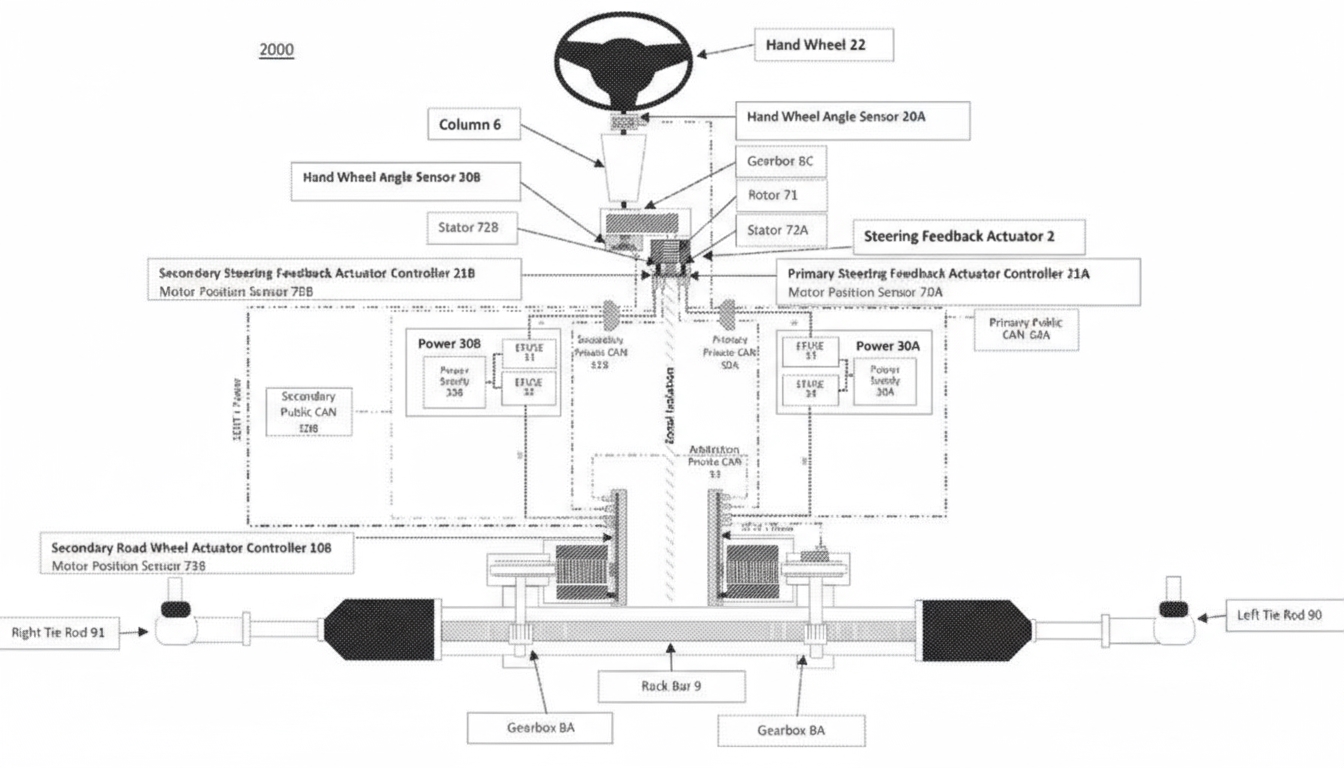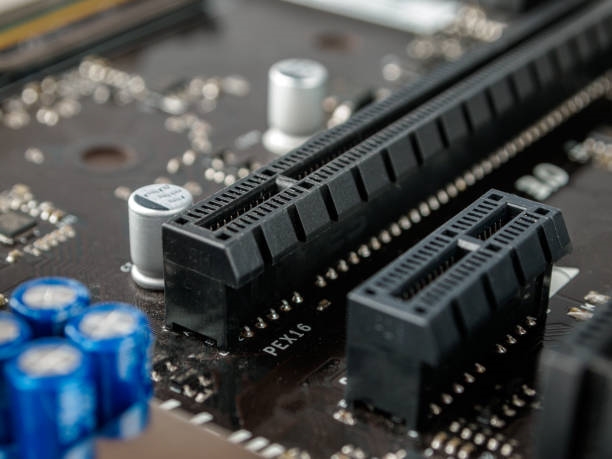Intelligent driving systems are vehicle control systems capable of perceiving, making decisions, and executing driving tasks autonomously. Common systems include:
- Automatic parking: Automatically controls the vehicle to complete parking maneuvers, including locating a parking space, steering, accelerating, and braking.
- Adaptive cruise control (ACC): Adjusts vehicle speed based on speed, following distance, and traffic conditions, and maintains a safe distance from the vehicle ahead.
- Lane keeping assist: Detects lane markings and controls the vehicle to remain within the lane to avoid drifting or collisions.
- Automatic emergency braking: Detects obstacles ahead and applies emergency braking to prevent collisions.
- Blind spot monitoring: Monitors blind spots around the vehicle and issues warnings to help avoid collisions in those areas.
- Autonomous driving: Fully perceives, decides, and executes driving tasks without human intervention.
These systems vary in capabilities and performance but aim to improve vehicle safety, comfort, and efficiency for drivers.
Several automakers have deployed advanced driver assistance and partial autonomous driving features. Notable examples include:
- Tesla: Tesla was among the first automakers to commercialize an autopilot-like system; its Autopilot can perform assisted driving on highways.
- Mercedes-Benz: Drive Pilot supports adaptive cruise, lane keeping, and automated parking functions.
- BMW: Active Cruise Control and Traffic Jam Assistant help drivers in congested traffic.
- Audi: Traffic Jam Pilot is designed for congested traffic scenarios and remains under testing for higher-speed autonomous operation.
- General Motors: Super Cruise enables hands-free driving on compatible highways and includes driver attention monitoring.
- Toyota/Lexus: Some Lexus models provide automated parking and adaptive cruise functions.
- Honda/Acura: Certain Acura models offer adaptive cruise and lane-keeping assistance.
These systems are under continuous development and refinement; drivers should remain attentive and be prepared to resume control when necessary.
China has many autonomous driving technology providers. Examples include Baidu Apollo, Chehejia, and Qiantu Motor, which offer sensor, computing, and software solutions and have collaborated with vehicle manufacturers.
The following sections outline recommended test procedures for common vehicle systems.
Assisted Driving System Testing
Assisted driving system testing should include:
- Confirming the test site: Use a flat, spacious, obstacle-free area, preferably a closed test track without other vehicles or pedestrians.
- Inspecting the vehicle: Verify that radar, cameras, and sensors for the assisted driving system are functioning correctly.
- Defining test items: Select test scenarios according to system functions, such as automatic parking, adaptive following, and lane changes.
- Conducting tests: Perform tests per the defined scenarios, record results, and analyze and address any issues encountered.
- Analyzing data: Evaluate system performance and reliability from test data to determine if adjustments are required.
- Repeat testing: Re-test after adjustments to confirm system stability and reliability.
Testing must follow established procedures to ensure safety and validity.
Onboard Obstacle Avoidance System Testing
Testing steps for onboard automatic obstacle avoidance include:
- Selecting the test area: Use an open, flat area free of obstacles and other vehicles to ensure safety and measurement accuracy.
- Defining the test route: Include straight driving, cornering, obstacle avoidance, and emergency braking to evaluate performance across scenarios.
- Installing test equipment: Fit sensors and cameras to monitor and record vehicle state during tests.
- Executing tests: Repeat tests multiple times for data reliability. Record speed, acceleration, steering angle, and other parameters for analysis.
- Analyzing results: Assess system safety and reliability from collected data. Optimize and iterate until performance meets expectations.
Parking Assist System Testing
Key test aspects for parking assist systems include:
- Sensor testing: Verify sensitivity and accuracy by placing obstacles of varying sizes and shapes around the vehicle and checking detection and alerts.
- Camera testing: Assess camera clarity and stability under different lighting and viewing angles to ensure clear visualization of the surroundings.
- Auditory alert testing: Verify volume and accuracy of audible warnings at different obstacle distances.
- System integration testing: Evaluate coordinated operation of sensors, cameras, and alerts by parking the vehicle in different positions and orientations to confirm timely and accurate obstacle detection and warning.
Ensure a safe test environment to avoid collisions and protect test equipment.
Adaptive Cruise Control (ACC) System Testing
ACC testing typically includes:
- Static testing: With the vehicle stationary, verify sensors, cameras, and radar operation and the system's ability to recognize road signs and lane markings.
- Dynamic testing: Evaluate adaptive behavior during driving at various speeds and traffic densities to confirm speed adjustments and safe following distance maintenance.
- Emergency braking testing: Test automatic braking in emergency scenarios and verify stopping distances meet safety requirements.
- Collision simulation testing: In controlled simulations, verify the system detects collision risks promptly and responds appropriately.
- On-road testing: Validate ACC performance under different road and weather conditions and across various driving styles.
Adhere strictly to traffic laws and safety protocols during testing to avoid risk to other road users.
Emergency Braking System Testing
Emergency braking system testing can follow these steps:
- Inspect the braking system: Check brake fluid level, disc and pad wear, and general brake system condition.
- Measure braking distance: In a safe test area, drive at a set speed, apply the brake suddenly, and record stopping distance.
- Measure reaction time: Record system reaction time from threat detection to brake application under set-speed conditions.
- Simulate emergencies: Test responses to sudden obstacles or abruptly stopped lead vehicles to evaluate reaction time and stopping distance.
- Check for faults: Observe for system faults such as warning lights or abnormal pedal feel during tests.
Conduct these tests in a secure area and maintain the vehicle to ensure correct brake system operation.
Vehicle Power Management System Testing
Testing of electric vehicle power management systems generally includes:
- Basic system tests: Verify power management functions such as power on/off, charge, and discharge control using dedicated test software or hardware tools.
- Battery testing: Test battery capacity, voltage, and internal resistance.
- Charging tests: Evaluate charging time, current, and protection mechanisms.
- Discharging tests: Assess range, current delivery, and output protection during discharge.
- Whole-vehicle tests: Perform integrated vehicle-level performance and safety tests.
Follow safety procedures to prevent battery leakage, short circuits, or other hazards and ensure test accuracy by following defined workflows.
In-Vehicle Bluetooth Testing
Bluetooth testing can be performed as follows:
- Confirm the vehicle Bluetooth device is paired with a phone or another Bluetooth device.
- Play audio files such as music or navigation prompts.
- Move the phone or device inside the vehicle to observe audio stability and quality.
- Test reception range by moving away from the vehicle to observe audio quality and stability.
- Verify connection stability by moving the paired device inside the vehicle and checking for drops or anomalies.
- Test compatibility with different phone models and brands to evaluate connection and audio performance.
- For voice call features, perform simulated calls to assess call quality and stability.
Ensure the vehicle is parked safely during Bluetooth testing and comply with local traffic regulations.
In-Vehicle Navigation Testing
Navigation testing typically involves:
- Preparing test routes: Select varied road types and traffic conditions, including highways, urban roads, rural roads, and mountainous terrain, and include scenarios such as congestion, accidents, or construction.
- Preparing test equipment: Use navigation devices and testing tools like GPS loggers, speedometers, and audio/video recording equipment.
- Conducting tests: Drive the planned routes and record navigation accuracy, route planning, voice prompts, speed and time estimates.
- Analyzing results: Identify issues from test records and data and propose improvements.
- Optimizing tests: Adjust routes, equipment, and methods to improve test accuracy and reliability.
Thorough testing ensures navigation performance and quality.
Reverse Parking Radar Testing
Reverse parking radar testing steps include:
- Verify power and wiring connections for correct radar operation.
- Place an obstacle simulator, such as a bucket or ball, about 2 meters behind the vehicle on level ground.
- Start the vehicle and engage reverse gear to check whether the radar detects the obstacle.
- If detection fails, inspect sensors for damage or contamination and clean or replace as needed.
- If detection occurs, verify that on-screen distance warnings are accurate.
- If warnings are inaccurate, adjust calibration parameters for improved detection accuracy.
- Avoid reaching into the radar detection zone during testing to prevent accidents.
Dashcam System Testing
Dashcam testing can cover:
- Video clarity: Assess resolution, color reproduction, and contrast under different lighting, weather, and road conditions.
- Video stability: Check for image shake, blur, or other issues during driving.
- Field of view: Verify coverage of driving scenes and adjustability of the recording angle.
- Storage capacity: Test storage size and recording duration.
- Loop recording behavior: Verify automatic overwriting of old files functions correctly.
- Emergency event saving: Check automatic saving of incident files and backup to external devices.
- Software features: Test configuration, export, backup, and sharing functions for completeness and reliability.
Voice Control System Testing
Voice control testing should include:
- Speech recognition accuracy: Test recognition across languages, accents, speech rates, volumes, and intonations.
- Response time: Measure system reaction time to voice commands under various network conditions.
- Interaction fluency: Verify the system correctly interprets user intent and provides appropriate voice responses.
- Functionality: Confirm reliable execution of commands such as playing music, navigation, and phone calls.
- Stability: Test for crashes or anomalies and performance under extended use and temperature extremes.
- User interface: Evaluate voice prompts, icons, and display design for usability.
These are common recommendations for voice control testing and can be adapted to specific systems.
In recent years, China's automotive industry has drawn considerable attention, and demand for vehicle and intelligent driving system testing has increased rapidly.
 ALLPCB
ALLPCB







